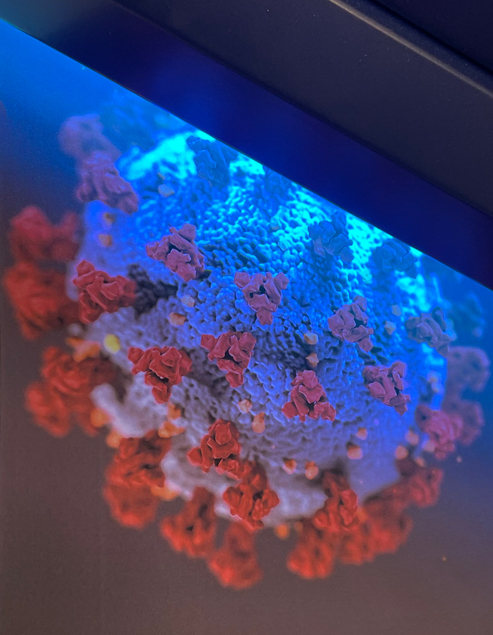
UVC for disinfection of surface
An overview of the advantages of using UVC light for disinfection during the Covid-19 pandemic, and the doses required for inactivating well-known bacteria and viruses.
Ultraviolet (UV) light is a term which is normally associated with the UV radiation that we receive from the sun. It is a spectrum of light, or electromagnetic radiation, that ranges from 10 – 400 nanometers (nm), and since the limit of human vision is approximately 400 nm, the ultraviolet light is not visible to the human eye.
Within the ultraviolet spectrum, the light is specified in the following categories:

At UVCbyEFSEN we use the UVC spectrum for our disinfection technology.
UVC can also be described as ‘germicidal radiation’, as it has long been recognized as having the ability to efficiently inactivate single-celled microbes such as viruses and bacteria.

At specific wavelengths within the UVC spectrum, the UV light is particularly effective at disinfecting all types of objects that is exposed to the light. Throughout the last century, research and applications of UV disinfection has been established, with the knowledge that the wavelength 253.7 is the most efficient for disinfection.
UVC lamps have been used for disinfection for decades. When a virus infects a host, it uses RNA or DNA to replicate, this is how it grows in number, trying to overwhelm our immune system and later spread to a new host. The energy of UVC light interacts with DNA and RNA, altering its structure so that it does not function.
The UVC light bulbs used in our products have been verified to neutralize bacteria and viruses, when used according to our operations instructions. Please see our knowledge articles below for more information on UV disinfection technology, and our products’ ability to inactivate bacteria and viruses.

An overview of the advantages of using UVC light for disinfection during the Covid-19 pandemic, and the doses required for inactivating well-known bacteria and viruses.
An article by Virology Journal states that a new study reports a high surface stability of SARS CoV-2 at room temperature, up to 28 days, for surfaces with high viral concentrations (corresponding to the concentration in saliva from infected patients).


The International Ultraviolet Association (IUVA) believes that UV disinfection technologies can play a role in a multiple barrier approach to reducing the transmission of the virus causing COVID-19, SARS-CoV-2, based on current disinfection data and empirical evidence.
New research from two independent studies provides data for inactivation of SARS CoV-2 (the Covid-19 virus) with UVC light at 254 nm. Following the latest scientific advances, EFSEN updates the recommendations for use of UV BARx1 and UV BARx1 PRO, with new, more beneficial values replacing the previous estimated averages based on old studies.

| Cookie | Duration | Description |
|---|---|---|
| cookielawinfo-checbox-analytics | 11 months | This cookie is set by GDPR Cookie Consent plugin. The cookie is used to store the user consent for the cookies in the category "Analytics". |
| cookielawinfo-checbox-functional | 11 months | The cookie is set by GDPR cookie consent to record the user consent for the cookies in the category "Functional". |
| cookielawinfo-checbox-others | 11 months | This cookie is set by GDPR Cookie Consent plugin. The cookie is used to store the user consent for the cookies in the category "Other. |
| cookielawinfo-checkbox-necessary | 11 months | This cookie is set by GDPR Cookie Consent plugin. The cookies is used to store the user consent for the cookies in the category "Necessary". |
| cookielawinfo-checkbox-performance | 11 months | This cookie is set by GDPR Cookie Consent plugin. The cookie is used to store the user consent for the cookies in the category "Performance". |
| viewed_cookie_policy | 11 months | The cookie is set by the GDPR Cookie Consent plugin and is used to store whether or not user has consented to the use of cookies. It does not store any personal data. |